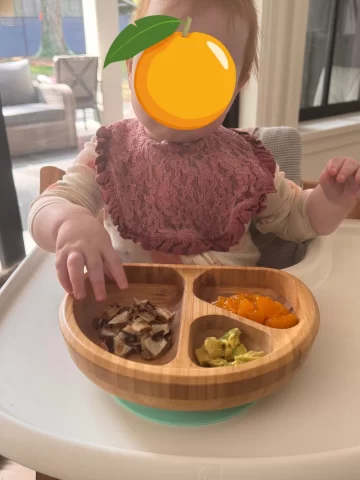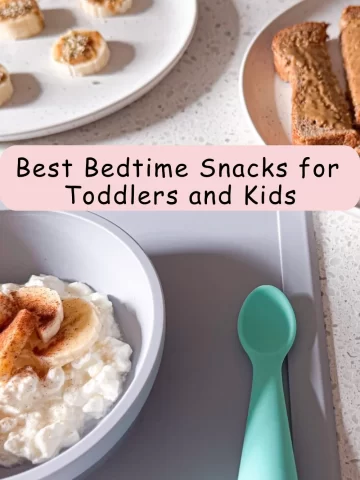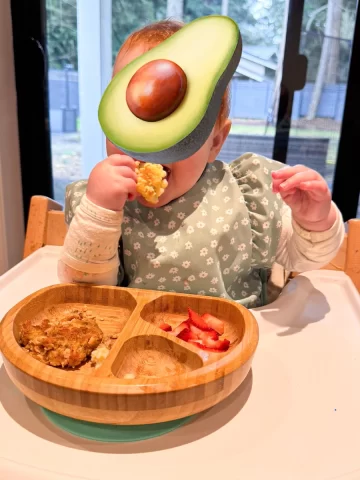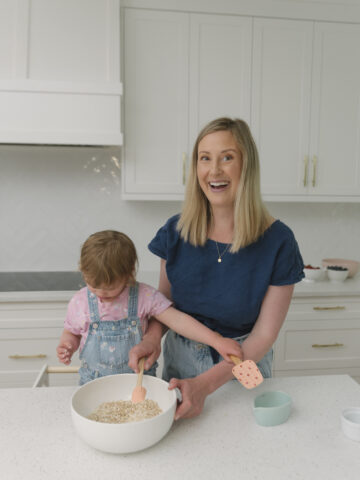Introduction to Iron for Toddlers
Welcome to the world of parenting, where we are always wondering if our kids are getting the right nutrients and enough of them! Let’s discuss iron for toddlers and kids. You’ve probably heard the recommendation and emphasis on introducing iron-rich foods once your baby begins to start solids. So let’s chat about iron and why it is important and how to make sure your little one gets enough!
Jump to:
What is Iron and Why is it Important?
Iron is an essential mineral that plays a key role in general health, growth and development. It’s an important component of hemoglobin, the protein in red blood cells that carries oxygen to the body’s tissues. Ensuring an adequate iron intake is essential for preventing iron deficiency anemia. Babies have iron stores built up in their body from pregnancy, which supports them for about the first 6 months. At this time, they require additional food sources of iron to meet their needs.
There are two types of iron. Heme iron – which is found in meat, fish and poultry and is more easily absorbed by your body and non-heme iron which is found in plant-based foods such as beans, lentils, nuts, seeds, whole grains and some vegetables. Non-heme iron is not as well absorbed by your body.
Tip: We can increase the absorption of non-heme iron by pairing these foods with foods that are rich in Vitamin C! For example, adding fruit such as berries, oranges, kiwi, or vegetables such as red, yellow and green bell peppers, leafy greens, and broccoli.
When to Start Introducing Iron-rich Foods
As a general rule of thumb, introducing iron-rich foods should begin around 6 months of age when your baby starts eating solid foods. Breastmilk or formula alone is not sufficient to meet the increasing iron needs at this stage.
Iron-Rich Foods for Babies and Toddlers:
- Lean Meats: Introduce meats like beef, chicken, or turkey.
- Beans and Lentils: High in iron and versatile for various baby-friendly recipes.
- Iron-Fortified Cereals: Opt for single-grain iron-fortified cereals.
- Dark Leafy Greens: Spinach, kale, and broccoli are excellent sources of iron.
How Much Iron does my Baby or Toddler need?
- 6-12 months: Babies need about 11mg of iron per day
- 1-3 years of age: Toddlers need about 7mg of iron per day
- 4-8 years of age: Kids need about 10mg of iron per day
See the infographic below to get a sense of how much iron is in certain foods!
Infographic of Iron-Content of Foods
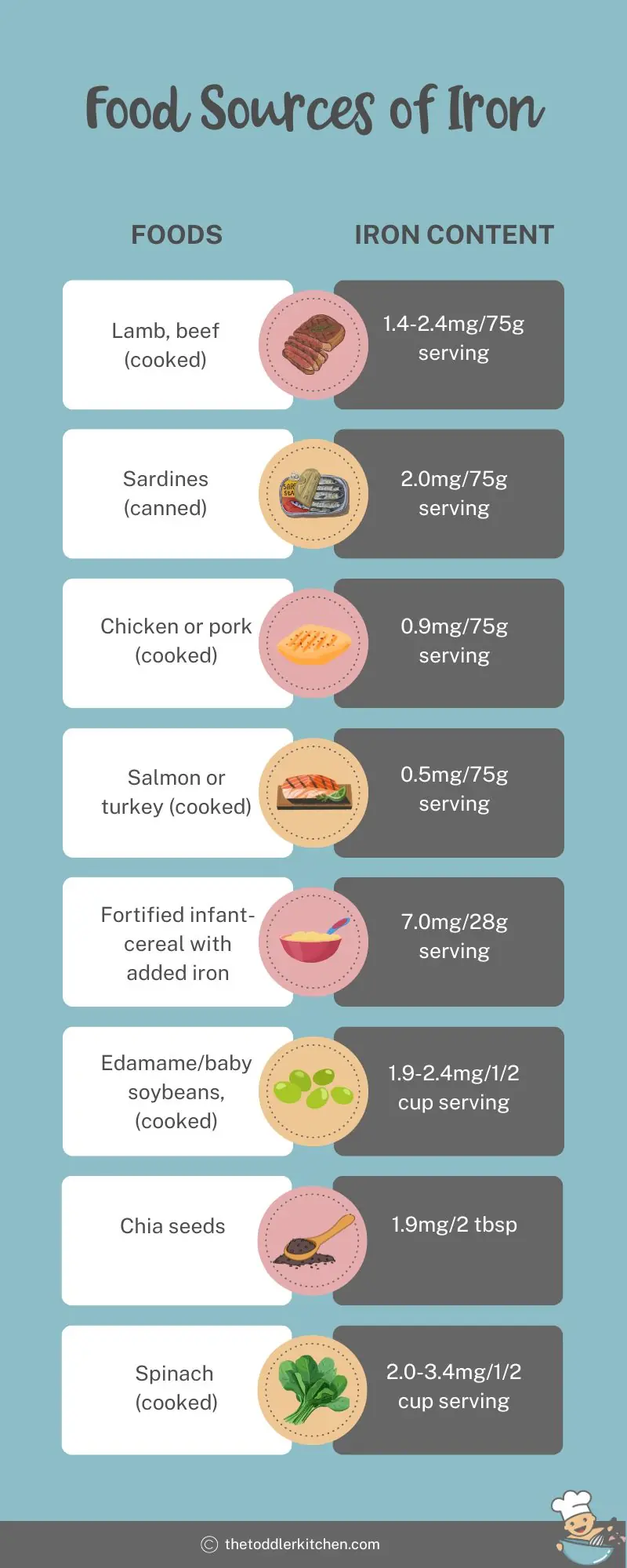
Save this recipe!
The elephant in the room
Ok, let’s just address the elephant in the room. A lot of these iron rich foods can be really challenging foods for babies to eat/enjoy! I remember trying to introduce beans, lentils and meat when my daughter was 6+ months. These foods, in particular meats, can be challenging to know how to prepare properly, and how to safely offer them. My little one at the time also wanted nothing to do with any of these foods! If you feel this way, you are not alone. I’ve put a few tips below and here is a great article from Happy Healthy Eaters on ideas for safely serving meat for babies.
Tips for incorporating iron for toddlers
- Find texture appropriate ways to prepare the meat so that you feel confident serving it to your little one.
- Using a slow cooker can make meat nice and tender
- Add sauces to meat to moisten it up such as applesauce or plum sauce
- Incorporating ground meat can be a great option, especially into pasta sauces
- And my favourite approach that I found worked well, mash in other foods with the meat such as avocado, or mashed sweet potato.
- Find a food your baby does enjoy and you feel comfortable with serving, such as pasta, and blend up some meat into the sauce. You could also blend in some beans or lentils into the pasta sauce.
- Fortified infant-cereal can be a helpful way to boost some iron, while providing an easy-to-prepare food that babies and toddlers typically enjoy. Although this can be an easier approach, I would encourage to continue trying to offer additional iron foods such as beans, lentils and animal-based protein foods, and not relying on fortified cereals. You could also pair with some chia seeds (additional iron source!) and some vitamin C rich foods to help with absorption.
- Offer eggs paired with some Vitamin C rich foods such as berries, apples, kiwi.
- Don’t stress – you are doing a great job!
Conclusion
Introducing iron-rich foods early on sets a strong foundation for your little one. Stay tuned for my recipe series on different ways to prepare some of the more challenging iron-rich foods! Happy feeding!

